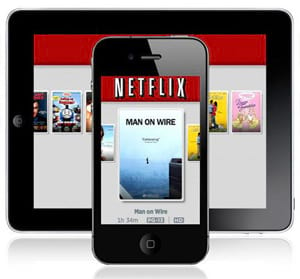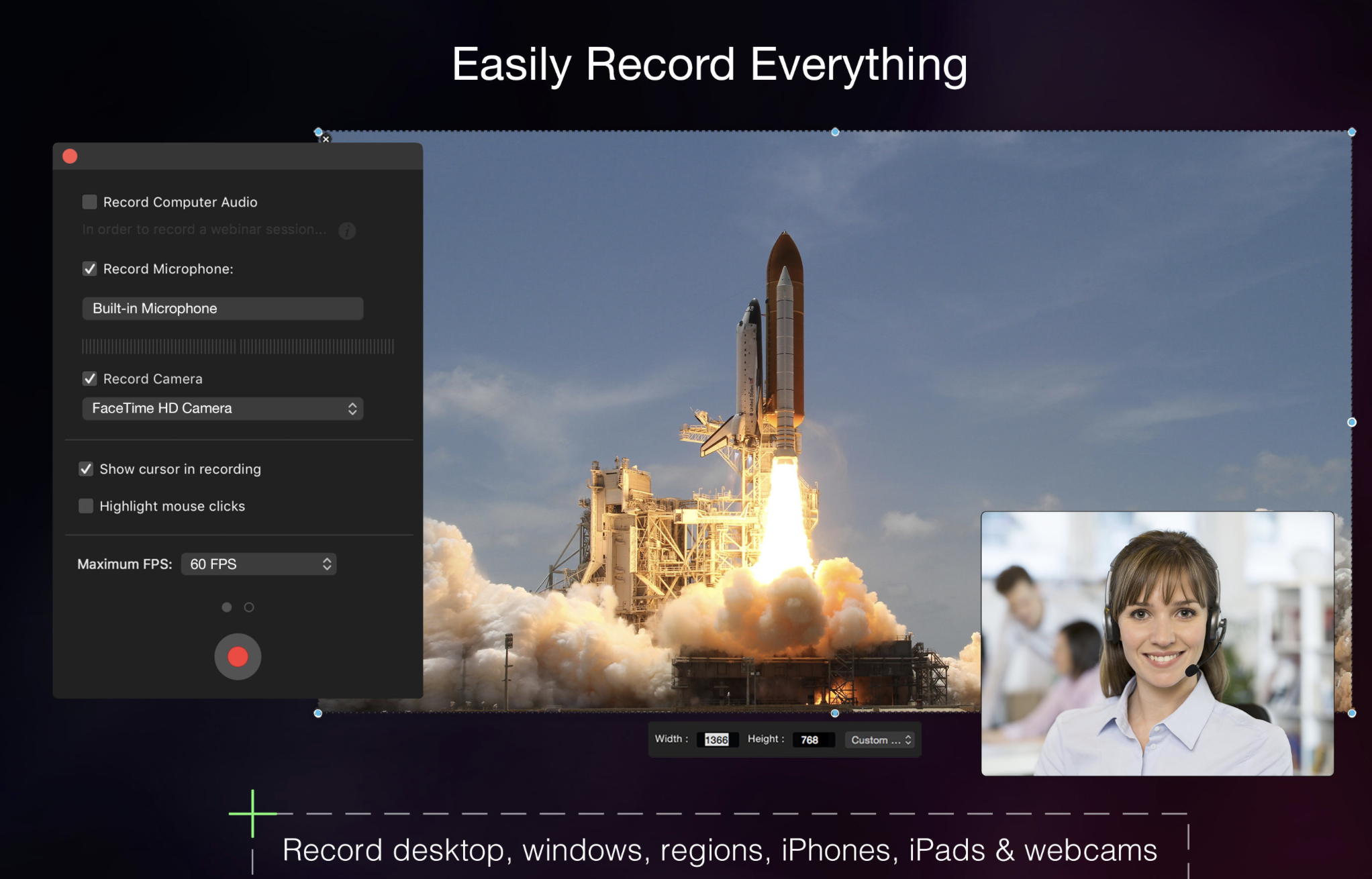Factory reset is the latest means to fix a MacBook Pro before giving it up completely. Part 2: Preparation before factory reset MacBook Pro. As said before, factory reset MacBook Pro is a little complicated than other devices, partly because there are more work about preparation, including backup, sign out iTunes, iCloud and other accounts. Netflix’s logo on a MacBook Air laptop display. Netflix Inc.’s generic strategy for competitive advantage (Porter’s model) and intensive growth strategies (Ansoff Matrix) support a primarily platform business model operating in the online digital content streaming industry. By default, Zoom kicks off screen sharing in full screen, which might be annoying for folks trying to watch the best horror movies on Netflix and witness their friend’s reactions at the same time.
When people are planning to sell the old MacBook Pro, or trying to fix issues on a MacBook Pro by doing a clean install of software, they first need to restore the computer to factory settings. It is the best way to wipe a Mac and able to erase all the data and content from a Mac. It is easy said than done. A MacBook Pro usually connects to iCloud, iTunes and other Apple services. To factory reset MacBook Pro, you have to do more than resetting a smartphone. Don't worry! This tutorial enables you to perform an unblemished factory reset MacBook Pro.
Part 1: What is factory reset a MacBook Pro?
Before you factory reset MacBook Pro, you may be still confused about what is factory reset and why do it. Briefly, factory reset is to erase all personal data and content from a device permanently and return it to factory conditions in the box.
People prefer to store photos, documents, iTunes account and other information on Mac computers. Factory reset is the best way to protect your privacy and information when you want to sell your MacBook Pro or put it to another hand.
On the other hand, factory resetting MacBook Pro is an ultimate solution to resolve various problems. Problems and complaints emerge continuously since MacBook Pro has been launched, such as blue screen, responding incorrectly and more. Factory reset is the latest means to fix a MacBook Pro before giving it up completely.
Part 2: Preparation before factory reset MacBook Pro
As said before, factory reset MacBook Pro is a little complicated than other devices, partly because there are more work about preparation, including backup, sign out iTunes, iCloud and other accounts.
Step 1. Create a backup for your MacBook Pro
To avoid data loss, backup everything on your Mac is necessary before factory resetting MacBook Pro. There are two methods to create a backup for MacBook Pro.
To back up your device, plug a large enough USB flash or external drive, go to System Preferences-> Time Machine, select Backup Disk, then follow the onscreen instructions to format the drive and transfer all files you want to back up.
Another way is to clone entire hard drive. The programs, like Carbon Copy Cloner and SuperDuper, could copy all data and information on your hard drive to an external hard drive.
The difference between backup with Time Machine and cloning is that former supports selectively copying. Cloning a hard drive means copy all information, including errors, malfunctions, configuration issues and even viruses.
Step 2. Sign out all accounts and services on your Mac
This step includes disabling iTunes, iCloud, FileVault and other apps link to your hardware. iTunes supports to set up to five Mac devices with one account. Disabling iCloud could remove some of personal content from Mac. And the FineVault is designed to encrypt your files on hard drive. So it is better to turn off these services before factory reset MacBook Pro.
- 1. De-authorize iTunes. Start iTunes, click Store and then Deauthorize This Computer, input your Apple ID and password and hit De-authorise to confirm it. If you use an old version of iTunes, the Deauthorize This Computer is in Account > Authorisations.
- 2. Turn off iCloud. Open iCloud in System Preferences, click Sign Out Now and then hit Delete from Mac on each popup dialog.
- 3. Sign out FileVault. Go to System Preferences-> Security & Privacy-> FileVault and turn off File Vault. You will be prompted to enter your password to confirm it.
Besides three services above, you may need to sign out other apps, such as Adobe Photoshop, Netflix and more. And if your MacBook Pro has Touch Bar, you also need to remove any Apple Pay card information.
Part 3: Start factory resetting MacBook Pro
After backup and sign out various services, you can feel free to start factory resetting MacBook Pro
Step 1. Boot your MacBook Pro in Recovery Mode
Click the Apple logo at the upper left corner of the screen and select Restart, then press and hold down the Command and R keys until Apple logo appears on the screen.
There are three key combinations of Mac OS Recovery, Command + R, Option + Command + R, and Shift + Option + Command + R. The first will install the latest Mac OS version without upgrading. The second will upgrade to the latest Mac OS. And the latter will install the Mac OS that came with your MacBook Pro.
Step 2. Erase your MacBook Pro's hard drive

When the Recovery Mode Utilities window shows up, pick Disk Utility and click Continue. Select your main hard drive usually called Macintosh HD.
Click the Erase button on top ribbon of Disk Utility to start erasing your hard drive for factory reset MacBook Pro. When it is done, close the application by clicking Disk Utility and then Quit Disk Utility.
When choose hard drive, you should look for the disk name, but not the volume name.
Step 3. Reinstall Mac on your MacBook Pro
Once the Disk Utility is closed, the Mac OS reinstallation window will present. Pick Reinstall MacOS or Reinstall OS X, you MacBook Pro will start connecting to Apple servers and downloading the Mac OS automatically through Wi-Fi network or Ethernet. The Mac OS version reinstalled depends on the key combination that you used in step 1. After reinstallation is complete, your MacBook Pro will restart. If you want to continuously use your computer, log in with your Apple ID and password. Otherwise, hold down Command + Q to skip the setup process.
The guides above are universal process of factory reset MacBook Pro. The detail menus may differ slightly depending on the version of iTunes, Mac OS and MacBook Pro you are using. Even though it may not match exactly, that's OK since the meaning is the same.
You May be Interested:
Conclusion
In this tutorial, we have told you how to factory reset MacBook Pro. There are a number of reasons that you need to reset your MacBook Pro to its factory settings. Perhaps, you will sell it and wipe your data off of it. Maybe it is not working properly or infected with virus. Anyway, you will find that factory reset MacBook Pro is not as difficult as you thought if you follow our guides above. To return your MacBook Pro to factory status, you'd better back it up first. And the final step, re-install the Mac OS, needs the internet connection. If you have any questions about factory reset your MacBook Pro, please leave a message below this post.
Netflix Inc.’s business model aligns with the company’s generic strategy for competitive advantage (Porter’s model), and intensive growth strategies (Ansoff Matrix). This alignment is seen as a factor in the company’s strategic position as a leading competitor in the on-demand digital content streaming industry. Netflix’s case is somehow comparable to that of Spotify’s business model, generic strategy, and intensive growth strategies, although there are differences in terms of product characteristics, competitive advantages, and how the business operates in providing streaming services. The platform business model defines both of these online companies’ operations. However, instead of focusing on music, Netflix Inc. focuses on movies and series, and the production of original content. Moreover, the company’s business model also involves a flat-rate subscription revenue model, in the absence of advertising within the streaming platform. Furthermore, Netflix’s intensive growth strategies and generic strategy for competitive advantage require management initiatives that extent beyond streaming operations.

Netflix’s generic strategy ensures that its business model works through suitable competitive advantages. The company’s business design and competitive position counteracts external forces involving Walmart, Amazon, Google, Apple, HBO, Disney, and other firms. Netflix’s intensive growth strategies promote business development while these competitive forces are addressed. Alignment of these growth strategies with the generic strategy and business model ensures the operational effectiveness and benefits of the corporation’s competitive advantages.

Netflix’s Business Model & Design
Netflix Inc.’s overall business model is a hybrid of various business models. This hybrid organizational system is due to the company’s operations involving on-demand streaming of entertainment content, and the production of original content, such as movies and series. In line with the corporation’s generic strategy for competitive advantage, these business models determine Netflix’s value chain and the associated competitive advantages based on the VRIN/VRIO analysis framework. The company is a strong example of how online business modeling provides the capability for large-scale high-efficiency operations, while minimizing costs. Netflix’s operations exhibit the following business models:
Netflix Application Macbook Pro
- Platform(digital media marketplace) and Pipeline (entertainment content production,etc.) business models
- Cutting-out-the-middlemanbusiness model (productionto distribution)
- Unlimitedsubscription businessmodel (revenue model for unlimited online access)
Pipeline and Platform Business Models. Netflix Inc. mainly has a platform business model for its online streamingoperations. Through the company’s platform, which is filtered to some extent,content producers reach consumers. Consumers access their preferred entertainmentcontent through the same platform. It is in the platform business model that Netflix’s generic strategy is mostsignificant, considering the competitiveadvantages based on cost efficiencies possible through informationtechnologies for global digital content distribution. On the other hand, thepipeline business modelapplies to the company’s content production operations. For example, throughits generic strategy, Netflix Inc. uses the traditionalpipeline approach to create new movies and series. The pipeline business model enablesthe company to control content production in a straightforward approach, whilethe business growth potential via the platform business model supports Netflix’s intensive growth strategies and generic strategy for competitive advantage.
Cutting-Out-The-Middleman Business Model. Netflix Inc. bypasses middlemen or intermediaries by directlydistributing its original content to customers via its own streaming service. Thecompany uses its competitiveadvantages and capabilities to apply this business model. For example, the platform’s largescale enables Netflixto efficiently distribute its original content to members. Such efficientcapability links to the online company’s efforts in implementing its generic strategy. Also inthis business model,other entertainment content producers can directly transact with Netflix to reach targetaudiences around the world, thereby supporting the company’s intensive growth strategies. Alongwith the genericstrategy, this situation eliminates some intermediaries or middlemen that aretraditionally involved in the distribution, sales, and marketing in theentertainment industry.
Unlimited Subscription Business Model. Netflix’s organizational design involves unlimited subscription,which is actually a revenue model that characterizes the company’s overall business model. Inunlimited subscription, customers have unlimited access to entertainment contenton the platform. This unlimited nature is a result of Netflix’s cost minimization efforts, inconnection to the enterprise’s genericstrategy for competitiveadvantage. For example, the corporation relies on cost efficiencies toensure profitability despite such unlimited subscription offer. This revenuemodel helps attract and retain customers, and increases the success rates of Netflix’s intensive growth strategies.
Netflix’s Generic Competitive Strategy
Cost Leadership. Netflix Inc.’s generic strategy is cost leadership, which in Michael E. Porter’s model ensures competitive advantage through minimized costs and, frequently, minimized selling prices. This generic strategy enables the online entertainment company’s business model’s competitiveness based on low costs and the corresponding ability to sell at affordable prices, without necessarily being a best-cost provider. In this generic strategy, Netflix broadly acquires more customers in the online entertainment market, in contrast to focus strategies that concentrate on specific market segments. For example, the media streaming company uses its competitive advantages to reach more customers in the international market. This broad approach of the generic strategy aligns with Netflix’s intensive growth strategies, which prioritize market penetration. The approach relies on the company’s business model and value chain, which satisfy customers partly through personalized customizations, such as in mobile app settings. Through intensive growth strategies, the cost leadership generic strategy for competitive advantage gains the biggest market share, relating to Netflix Inc.’s corporate mission and vision statements, which point to the strategic plan and goal of attaining and maintaining leadership in the international online entertainment industry.
Differentiation. Even though Netflix mainly applies cost leadership as its generic strategy for competitive advantage, thebusiness also uses differentiation in its operations. As a generic strategy,differentiation involves developing the online business and its products inways that make them different from the competition. For example, Netflix develops its competitive advantage byproducing its own original content, aside from streaming content from thirdparties. The differentiation genericstrategy enables the businessmodel to attract and retain customers, thereby supporting intensive growth strategies forfurther expansion of the online operations.
Netflix’s Intensive Growth Strategies
Market Penetration is the main intensive growth strategy of Netflix Inc. in expanding its business operations and multinational market reach. In the Ansoff Matrix, this growth strategy involves selling more of the online company’s streaming services in the markets that the business already has. This growth strategy’s objective of growing revenues and market share depends on how Netflix’s generic strategy maintains competitive advantages to gain and retain more customers in current markets. Other strategic areas also influence how the generic strategy and intensive growth strategies are applied as part of the online business model. For example, Netflix Inc.’s marketing mix or 4Ps defines the business strategies and tactics used for market penetration. Moreover, in using this intensive growth strategy, the corporation strengthens its business to successfully penetrate digital content streaming markets despite competitive rivalry. The business strengths discussed in the SWOT analysis of Netflix Inc. are factors for such strengthening of overall competitive advantage.
Market Development supports Netflix’s organizational development, but only as asecondary intensive growthstrategy. Market development works by selling the company’s currentonline streaming service and original content to new markets. For example, inapplying this growthstrategy, one of Netflix’sgoals is to grow the business by entering more countries, which serve as newmarkets. The company’s cost leadership generic strategy contributes to the success of this intensive growth strategy by makingthe online service attractive on the basis of price affordability. Competitive advantages areessential in making Netflix’sbusiness modeleffective in generating profits in these new markets.
Product Development is another secondary intensive growth strategy that supports Netflix’s development and expansion. According to Igor Ansoff, this growth strategy’s objective is to develop and sell new products in the online company’s current markets. For example, Netflix uses its generic strategy for competitive advantage to efficiently produce new content for current subscribers, whose time spent watching such content adds to the company’s profits. This support for new entertainment content production is part of the pipeline business model within the company’s overall business model. Success in the product development intensive growth strategy depends on how Netflix Inc.’s organizational culture supports relevant product innovation processes.
Diversification is rarely applied to grow Netflix’s operations, arguably because of the high risks involved in this strategic direction. This intensive growth strategy’s goal is to grow the business through new operations outside the company’s current business of online streaming and original content production. This growth is possible through Netflix’s generic strategy and the business model’s capacity for new operations. Considering its competitive advantages, the enterprise is likely to focus on businesses or industries related to online media streaming when applying this intensive growth strategy. The functional changes involving this growth strategy could require new components in Netflix Inc.’s organizational structure.
Netflix-app Macbook Download Chip
Strategic Implications of Netflix’s Generic Strategy, Intensive Growth Strategies, and Business Model
Netflix’s generic strategy focuses on maximizing the competitive advantages of high operational efficiencies and cost effectiveness of information technologies. The company’s intensive growth strategies require aggressive marketing to expand multinational streaming operations. These corporate strategies are based on Netflix’s business model, where cost minimization and market penetration are supported. The online company’s business framework implies strategic management support for information technologies for efficient operations and global expansion. Netflix Inc.’s operations management implements these strategic implications, ensuring that all areas of operations are aligned to strengthen the business model and generic strategy for competitive advantage, and to support the intensive growth strategies.
References
Netflix Application Macbook
- Adner, R., Ruiz-Aliseda, F., & Zemsky, P. (2016). Breaking Trade-Offs: When is Dominating from the Middle a Winning Generic Strategy? In Academy of Management Proceedings (Vol. 2016, No. 1, p. 16580). Briarcliff Manor, NY 10510: Academy of Management.
- Hussain, S., Khattak, J., Rizwan, A., & Latif, A. (2014). Interactive effects of Ansoff growth strategies and market environment on firm’s growth. British Journal of Business and Management Research, 1(2), 68-78.
- International Trade Administration of the U.S. Department of Commerce – The Media and Entertainment Industry in the United States.
- International Trade Administration of the U.S. Department of Commerce – The Software and Information Technology Services Industry in the United States.
- Netflix Inc. – Investors – Long-Term View.
- Netflix Inc.’s Annual Report to the U.S. Securities and Exchange Commission (Form 10-K).
- Netflix Inc.’s Website.
- Pauwels, K., & Weiss, A. (2008). Moving from free to fee: How online firms market to change their business model successfully. Journal of Marketing, 72(3), 14-31.
- Sakellaridis, K., & Stiakakis, E. (2011). Business model change due to ICT integration: An application to the entertainment industry. International Journal of Computer Information Systems and Industrial Management Applications, 3, 1-13.
- Spry, A., & Lukas, B. A. (2016). Brand Portfolio Architecture and Firm Performance: The Moderating Impact of Generic Strategy. In Looking Forward, Looking Back: Drawing on the Past to Shape the Future of Marketing (pp. 866-867). Springer, Cham.
